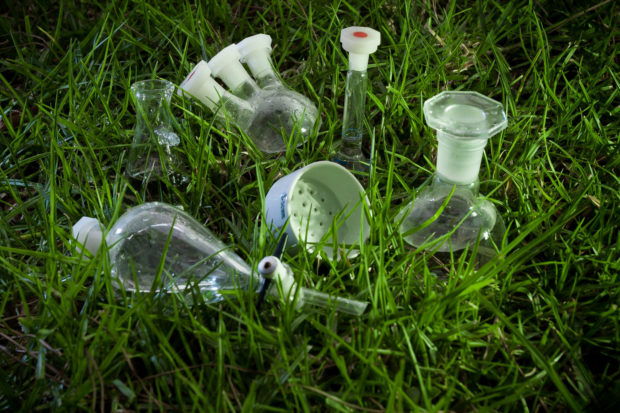
Green! Green! Green! It seems as if green is everywhere.
With the 40th anniversary of Earth Day (April 22, 2010), concern with solar and other forms of alternative energy, global climate change, greenhouse gas emissions, biomass conversion, and a host of environmental problems have proliferated everywhere in the media. Evangelical groups, taking humankind’s stewardship of our planet seriously, have joined the movement. Sales of hybrid vehicles, formerly in only moderate demand, have skyrocketed, and we seem to be reaching a tipping point as citizens and societies all over the world are finally paying attention to these long-festering problems.
Former U.S. Vice President and 2007 Nobel Peace Prize laureate Al Gore’s An Inconvenient Truth, the Academy Award–winning motion picture of 2006 and the fourth largest grossing documentary of all time, triggered a global movement to solve the climate crisis. The green revolution in agriculture—the tremendous increase in the production of food grains due to the introduction of high-yielding varieties, the judicious use of pesticides and better management techniques—was catalyzed by the late 1970 Nobel Peace Prize laureate Norman E. Borlaug.
However, priority in calling for measures to mitigate the adverse effects of human actions on the environment dates from the 1912 address, “The Photochemistry of the Future,” by the Armenian-Italian chemist Giacomo Luigi Ciamician (1857–1922), founder of photochemistry and pioneer of solar energy, who sought synthetic methods that could be carried out under conditions as mild as those found in nature.
Today we live in a world in which being as environmentally healthy as possible is not a luxury but a virtual necessity. Green chemistry, a multidisciplinary approach that seeks to assess the environmental impact and sustainability attributes of chemicals and their derivative products, while minimizing any deleterious effects on our environment, has entered mainstream science.
A recent article in a local newspaper called attention to a welcome consumer initiative. However, it used the term green chemistry incorrectly to refer to the banning of chemicals. Green chemistry, a vitally important subject, refers to the steps taken by the chemical industry to prevent environmental pollution before it occurs—not to cleanup after the pollution has occurred. If even the media are confused about the term, what can the average citizen make of the term?
Green chemistry has entered mainstream science. In 2003, the American Chemical Society, the world’s largest scientific organization, established an annual Summer School on Green Chemistry & Sustainable Energy for graduate students and postdoctoral scholars, and in 2007 the Rohm & Haas Company established a national ACS Award for Affordable Green Chemistry. On August 16, 2009, ACS Green Chemistry Institute Director Porter Robert Peoples proposed a standard for chemical producers and users to assess the environmental impact and sustainability attributes of chemicals and their derivative products.
The guiding design framework for green chemistry consists of 12 principles, which outline the approach to the innovation of new chemical transformations and products that will be more benign for human health and the environment as well as more sustainable. They ensure that all aspects are as inherently non-hazardous as possible throughout the entire life cycle of a chemical product or process from its origins in the feedstock to the end of its useful commercial life.
The principles were first stated in Paul T. Anastas and John C. Warner’s Green Chemistry: Theory and Practice (Oxford University Press: Oxford/New York, 1998) a book now translated into six languages. The principles are: 1) prevention, 2) atom economy, 3) less hazardous chemical syntheses, 4) designing safer chemicals, 5) safer solvents and auxiliaries, 6) design for energy efficiency, 7) using renewable feed stocks, 8) reducing derivatives, 9) catalysis, 10) design for degradation, 11) real-time analysis for pollution prevention and 12) inherently safer chemistry for accident prevention.
Anastas, who coined the term, is widely regarded as the “father of green chemistry.” As the inaugural Teresa and H. John Heinz III Professor in the Practice of Chemistry for the Environment at Yale University and director of Yale’s Center for Green Chemistry and Green Engineering, he established the industry-university partnership Green Chemistry Program, which was expanded to include basic research in the field and the Presidential Green Chemistry Challenge Awards.
From 1999 to 2004, Anastas was assistant director for the Environment in the White House Office of Science and Technology Policy, and in 2009 President Obama nominated him as assistant administrator of the Environmental Protection Agency’s Office of Research and Development and the agency’s science adviser, a position that he occupies in Washington, D.C. He has served as director of the Green Chemistry Institute at the ACS headquarters in Washington, D.C., and is a frequent coeditor of research works, for example, Green Chemistry Education: Changing the Course of Chemistry, (Oxford University Press, 2009).
In the words of Steven V. Ley of Cambridge University, “The future image of the [chemical] industry and society’s respect for it will hinge upon a clear demonstration of its belief in and stewardship of the principles of Green Chemistry.”
As we all know, the profit motive is paramount in capitalism. As some companies—but unfortunately, far from a majority—are belatedly beginning to recognize: Prevention is cheaper than cleanup. Perhaps appeal to monetary concerns may be effective where humanitarian appeals seem to fall on deaf ears. According to David J. C. Constable, vice president for energy, environment safety and health of Lockheed Martin Corporation in Bethesda, Maryland, “Going green is cost beneficial. In every case I know, the green option is the low cost option. Because of the perception of green being more expensive, there may be those who think it needs to go down on the priority list. These will be the companies that do not survive in the long term.”
Let’s hope that his prediction is not unfounded.
